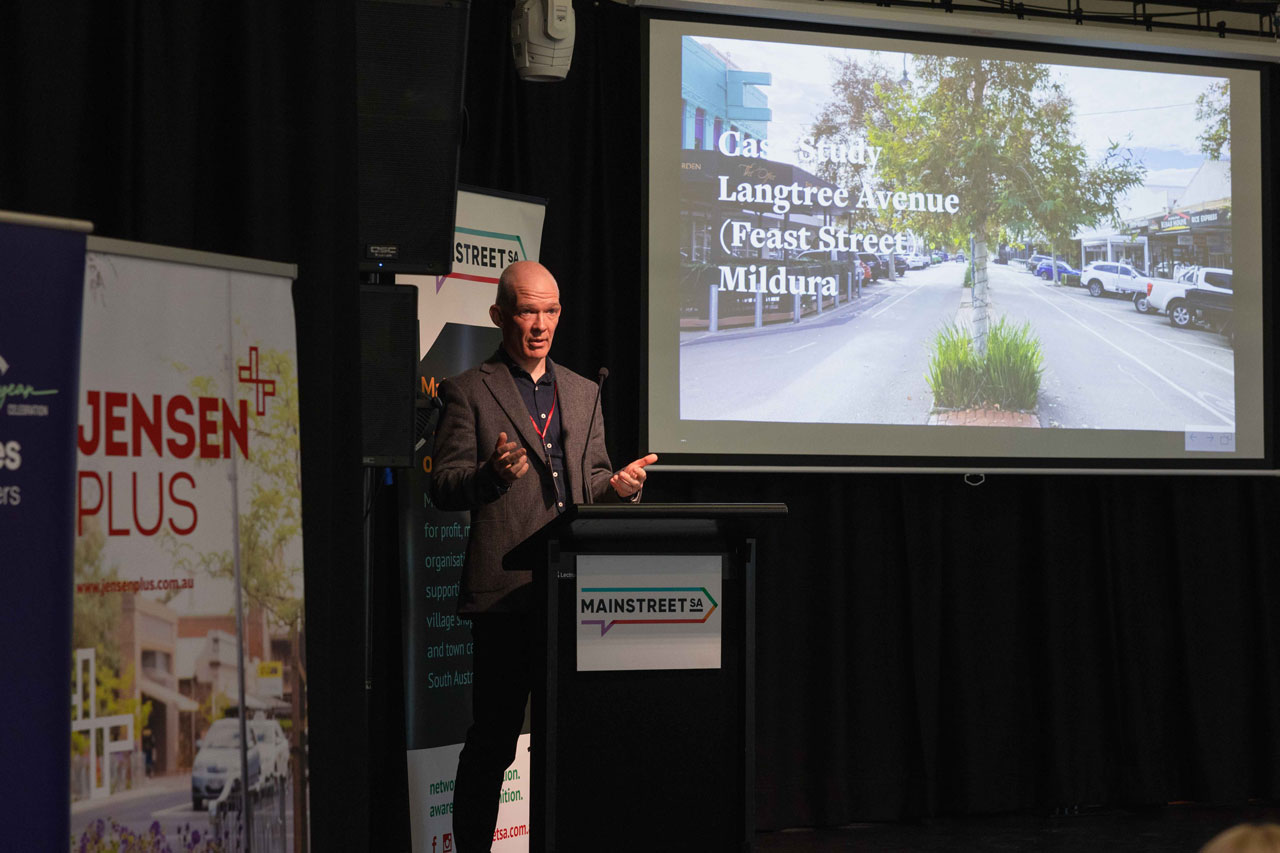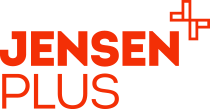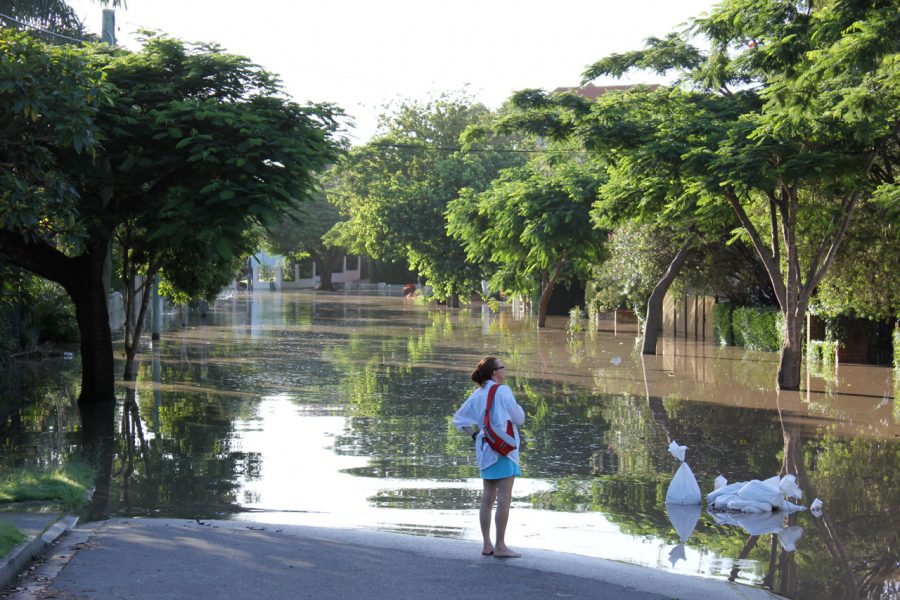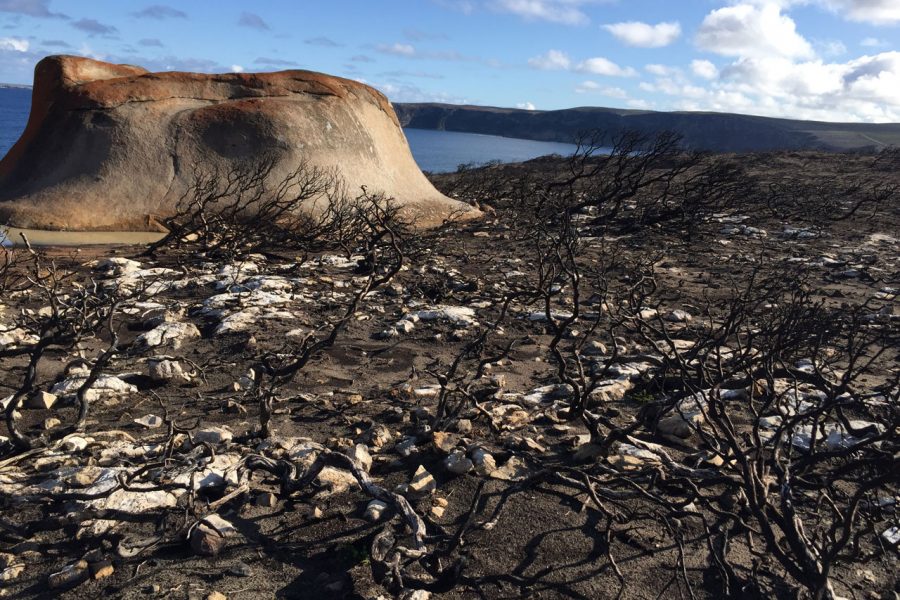Regenerative planning and design
In June 2023 we wrote about achieving climate positive designs in our streetscape and town centre projects in our news article, Climate Positive Design for carbon responsible projects. This article outlined how we use Pathfinder — a tool that measures the carbon impacts of public realm projects — demonstrating this through a case study in a regional Australian town.
This is a theme we have expanded on in recent presentations to industry colleagues and practitioners. In September, Michael McKeown, Jensen PLUS Director, presented at the Mainstreet SA 2023 Summit which was held in the fantastic Prospect Road, as well as the Planning Institute of Australia’s South Australian Conference held at Glenelg.
“Through both presentations I wanted to take our climate positive approach a bit further and really consider how our planning and design work can be regenerative for communities, local economies and the environment,” says Michael.
Sustainability versus regenerative practice
The concept of sustainability has been widely integrated into built environment professions since the early 1990s. Since then, sustainability principles, actions and features have become an expectation of our work, and we actively promote sustainability through our designs and plans.
However, after four decades of planning for sustainability, it seems that environmental degradation and climate change and its serious and negative impacts on our communities are accelerating rather than moderating.
“We’ve all witnessed the devastation of bushfires, floods and storms, and the reality is that these extreme weather events are becoming common, not the exception as they were once considered,” says Michael.
“At the same time, Australia is one country among many struggling with a housing crisis and a cost of living crisis, which suggests that the economic and social pillars of the sustainability ‘Venn diagram’ are also out of alignment.”
Has the sustainable design paradigm failed? Michael is one of many urban planning practitioners that believe so.
Whereas a balanced social-economic-environmental approach defines ‘sustainability’, a ‘regenerative’ approach to planning and design is now emerging which emphasises the need for positive and restorative change to be achieved for local environments, communities and economies.
“In other words, we can’t just balance or offset impacts against each other, we have to improve on current conditions and do so significantly. We have to ‘do good’ through all of our projects.”
Reimaging growth and progress
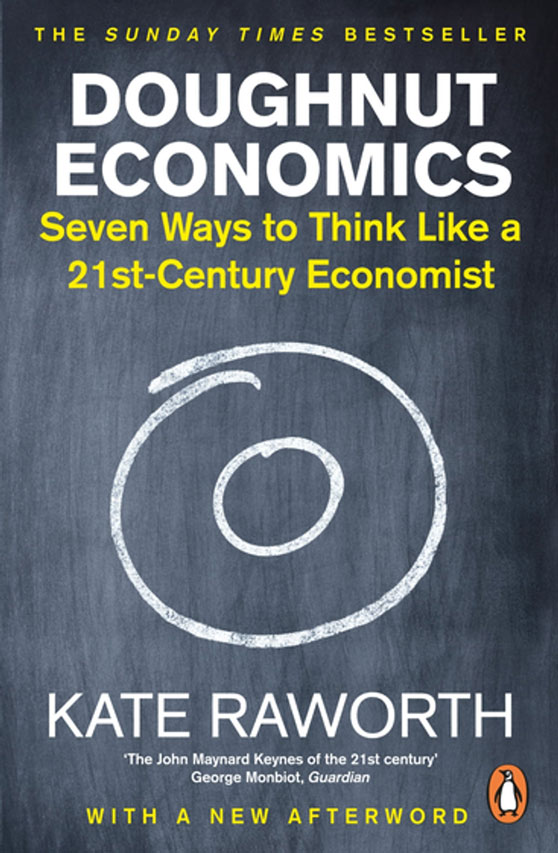
Referencing the regenerative theme, economist Kate Raworth conceived ‘doughnut economics’ as an alternative economic framework that reimagines the shape of growth and progress.
Michael highly recommends her book, Doughnut economics: Seven ways to think like a 21st century economist, as an alternative way to think about how our economy and society operates.
You can also watch Kate Raworth’s Ted Talk on creating a thriving economy here.
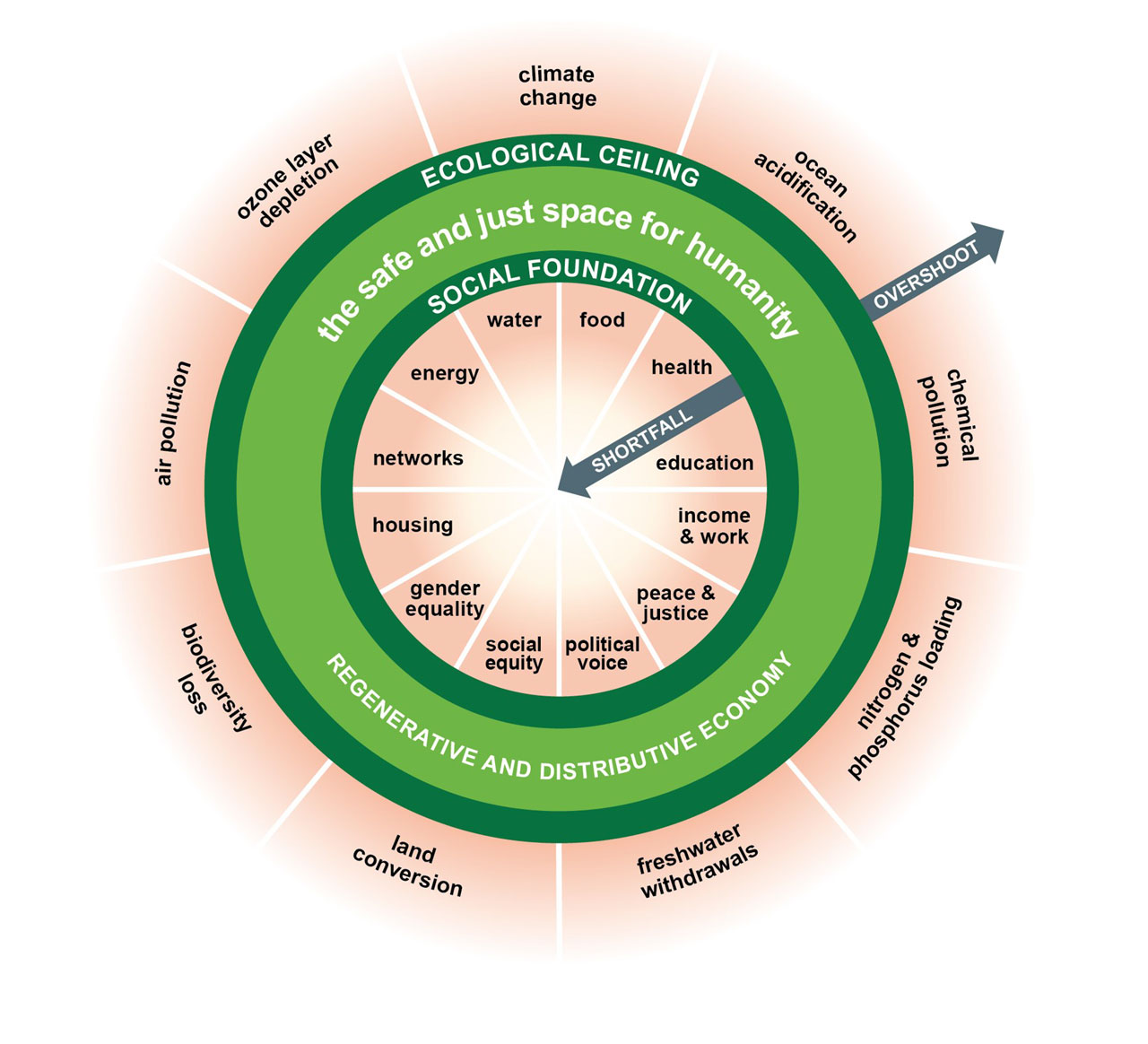
“The doughnut economics framework challenges our longstanding reliance on continuous and, some would say, over ambitious economic growth.” says Michael.
Within a doughnut economy, exploitation of resources, or ‘overshooting’ the doughnut, by pollution or biodiversity loss for example, is avoided. And on the flip-side, shortfalls in income, housing, water, energy and health are avoided too.
“The ‘safe and just space’ for community and economy exists within ring of doughnut itself, conceptually, and this is where we should aim to operate to achieve the best we can through our work.”
Planning with Country
As a business and industry, we are also learning more about how Aboriginal Australians respond to planning and design with respect to Country.
“Our European and human-centric approach to the world — with man at the top and women, animals and plants below — is not the only framework we can adopt.
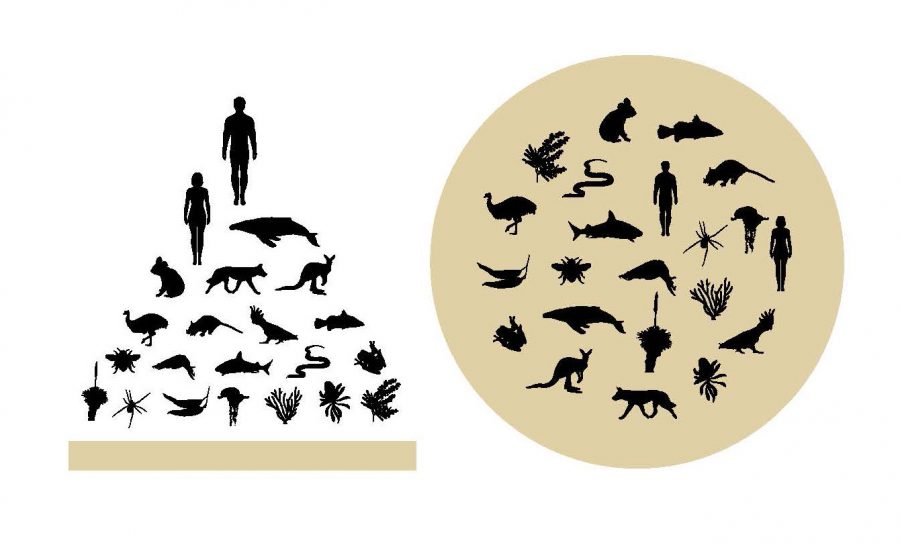
“And I would suggest that there is a compatibility between a ‘Planning with Country’ model — where elements of life are shown as equal and in a non-hierarchical circular framework — with a circular and regenerative way of thinking about economics, community and environment.
Which leads Michael to pose the question, “Perhaps it’s time for planning and design practitioners to act and think in a more circular way?”
Even doing the right thing is a challenge
We have previously written about how Jensen PLUS is an accredited carbon neutral business.
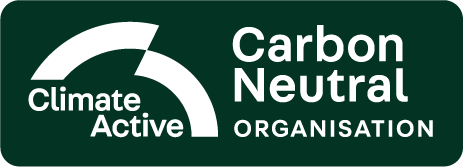
“Our team was shocked by the scale and damage of the 2019/20 bushfires that burned large parts of South Australia and the eastern states.
“Part of our business response was to critically consider how we can address our own actions and operate in a more environmentally sensitive way.”
The first step was to address the carbon impact of the business operations, starting with the electricity consumption of Jensen PLUS.
“Jensen PLUS made the decision to purchase 100% renewable green power in 2019 and will continue to do that into the future. This means that our electricity retailer has to find equivalent renewable power on the wholesale market to meet all of our power needs.”
Michael encourages other businesses to do the same, saying “It only takes a phone call!”
Jensen PLUS has been carbon neutral certified for business operations for 2019, 2020, 2021 and 2022.
“Our business has reduced emissions by 68% compared to the base year in 2019,” says Michael.
“While future emission reduction opportunities are diminishing, we are committed to seeking out further options for waste reduction, transport improvements and operational changes that promote more sustainable and regenerative outcomes for our planning and design work and our climate positive designs.”
Our philosophy is to avoid what we can, minimise what we do and offset the rest.
“Last year [2022] we had only 13 tonnes of carbon emissions to offset — which is not a large number.”
However, identifying reliable, good quality offsets is a challenge, especially if you want the offsets to be Australian-based.
“They are hard to find and hard to buy, especially in small amounts, and criticisms have been made of some offset programs with suggestions that it’s all a bit of a rort.
“For Jensen PLUS, reducing emissions is a voluntary thing and its doubly disappointing that having made the decision to do good, doing good is actually not that easy.”
You can read more about our carbon neutral journey through the Jensen PLUS public disclosure statements on the Climate Active website.
Upgrade of Feast Street, Mildura
The first example of a regenerative practice that we have written about is our climate positive analysis undertaken for the Feast Street design upgrade in Mildura — a charming city along the Murray River, a one hour drive in a straight line from South Australia across the Victorian border.
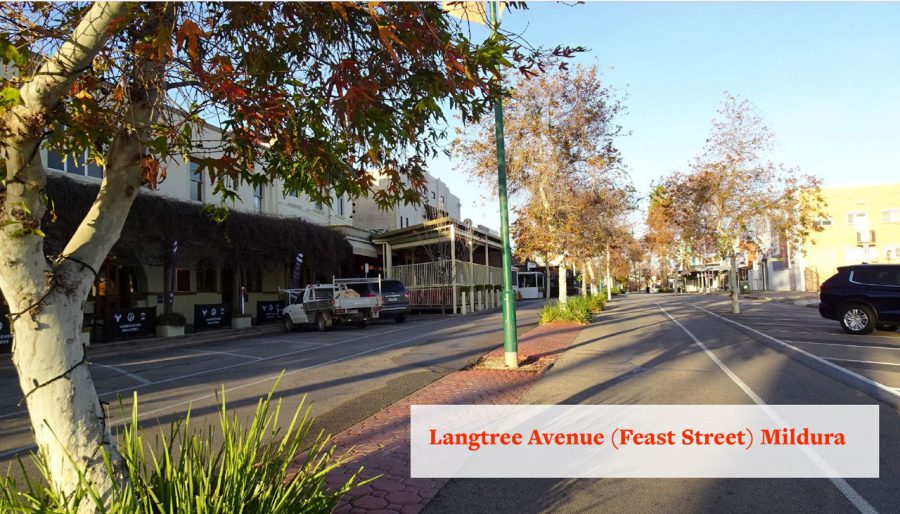
Feast Street is the colloquial name of the section of Langtree Avenue between Seventh and Eighth Streets, with the name referencing the high concentration of dining, café and entertainment businesses this street has come to be known for.
“The street has good traditions and business mix but is not green enough, cool enough or shady enough.”
The general consensus is that the public realm is dated and of poor quality as are some of the surrounding buildings. And for the majority of every day, the street functions as a free car park.
“Last year we worked to identify some main street concepts that would enliven the street — one of the things we enjoy doing and do well,” says Michael.
The preferred concept for Feast Street’s redevelopment is a shared street design with a feature ‘dining arbour’ and vines running along both sides of the street.
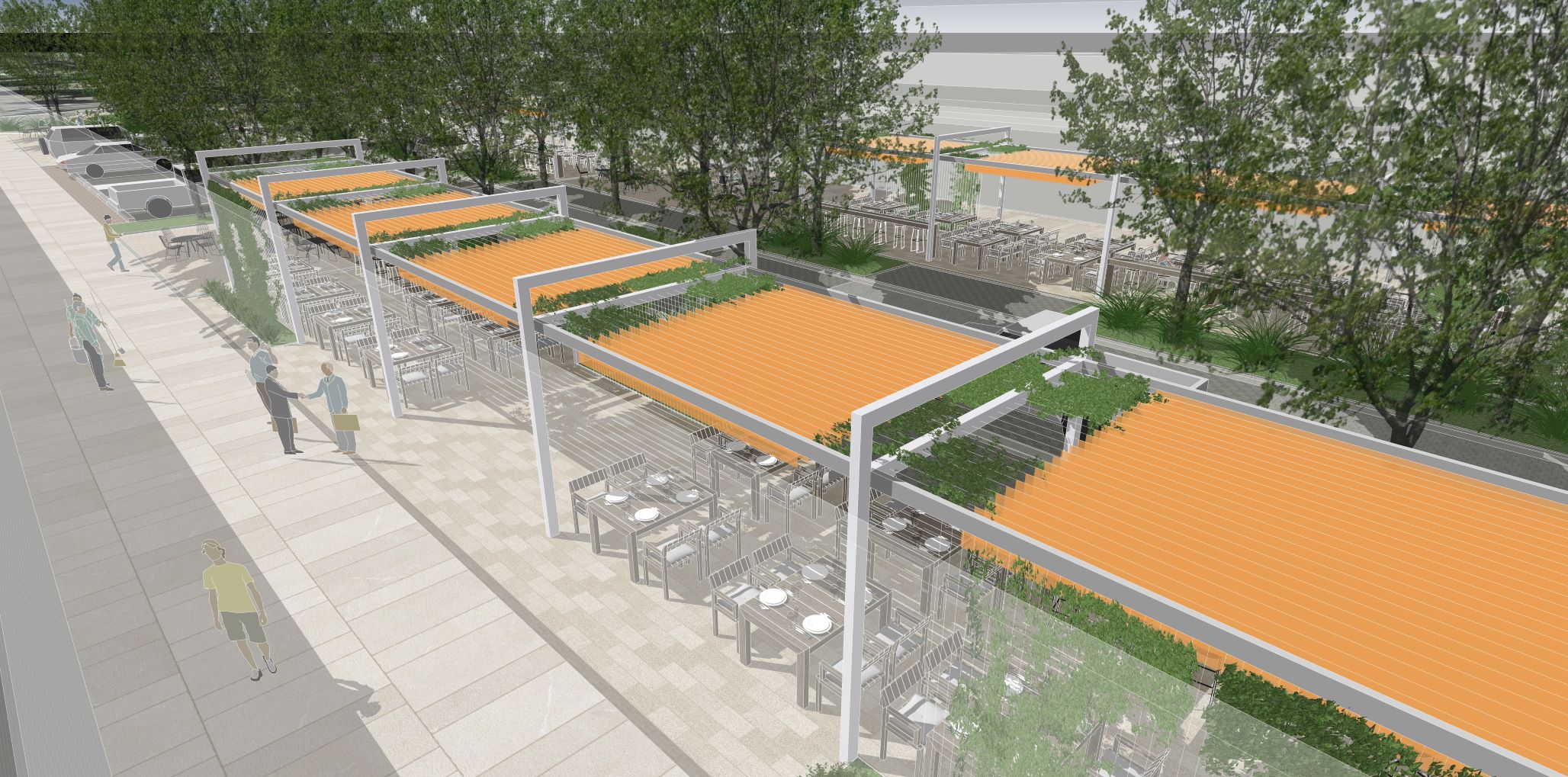
“We really thought that our green, shady, social and community focused design would result in nothing less than a highly positive carbon impact.”
“So as part of our research initiatives we conducted a carbon positive assessment and the result came as a surprise to us,” Michael reflects.
“We included plenty of trees, green structures and garden beds and, as such, expected the carbon impact to be much less than the results showed.”
The modelling for this project suggests that it would take 149 years for the design to become carbon positive. Read more about the analysis in our case study.
“The main finding was that the high carbon score can be attributed to the material selection, primarily the inclusion of common materials such as concrete, and concrete pavers — and that’s a real challenge for public realm design.”
So do we need to think about retaining and reusing existing materials a lot more, rather than creating new streetscapes just so the look and feel of the street can meet our style and design expectations?
Or are streetscapes like Feast Street relatively small and their carbon impacts extremely small compared to the vast emissions that might be embodied within a broader city or indeed other sectors such as energy, transport, agriculture or mining?
American River Place Plan
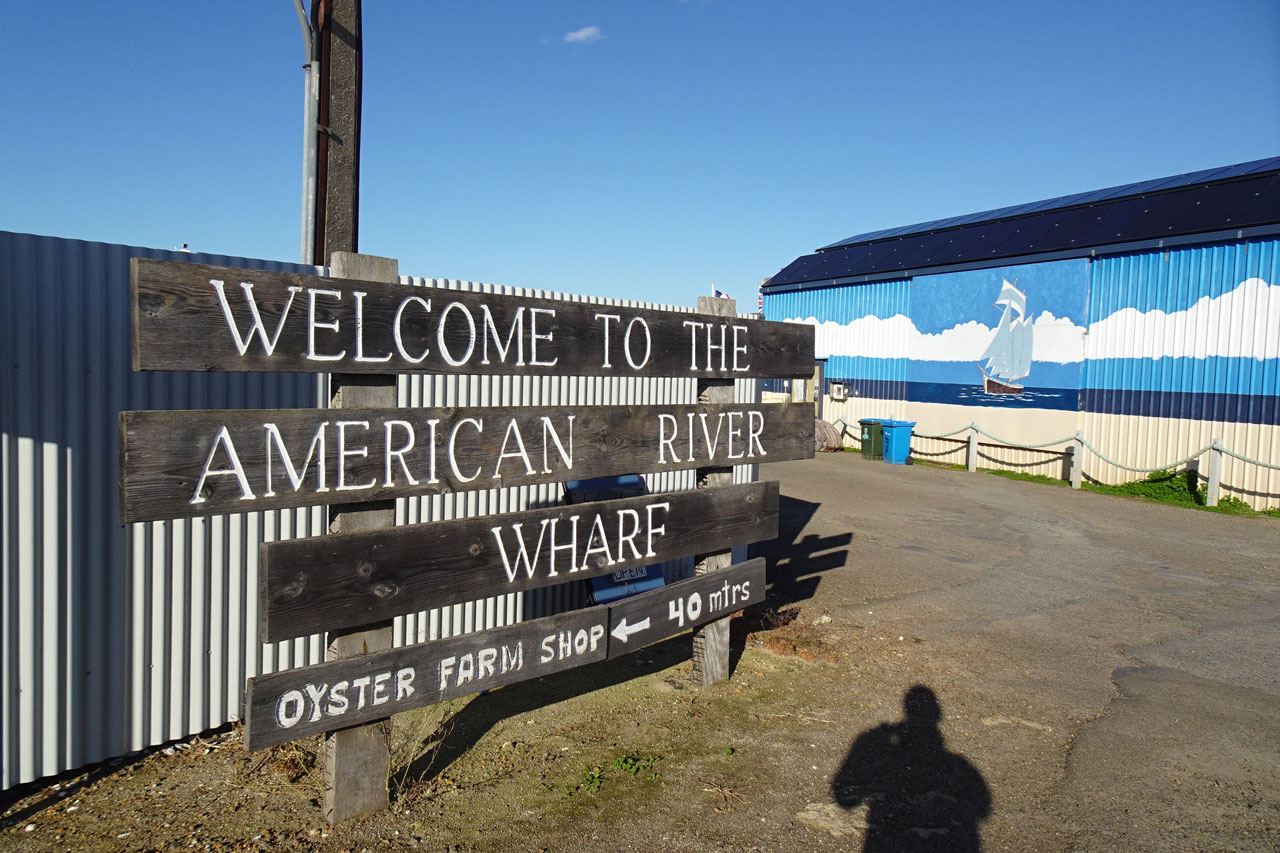
Regenerative thinking is about environmental good but it’s also about community good and local economic development.
“Many of us do plenty of work in this space and sometimes we are fortunate to work with communities that are already organised and motivated,” says Michael.
“I have a close connection with the community in the small township of American River on Kangaroo Island through family, so I was very keen to work on this project.”
The American River Place Plan supports the slow, organic growth of population and visitors to sustain community services and keep in balance with nature.
“In August 2022, we held a successful two-day co-design workshop in the township with community members and key stakeholders.
“Through the workshop we identified opportunities for developing a marine precinct, affordable housing, a vibrant village centre and other projects to support American River’s future as a welcoming, tranquil and connected place.”
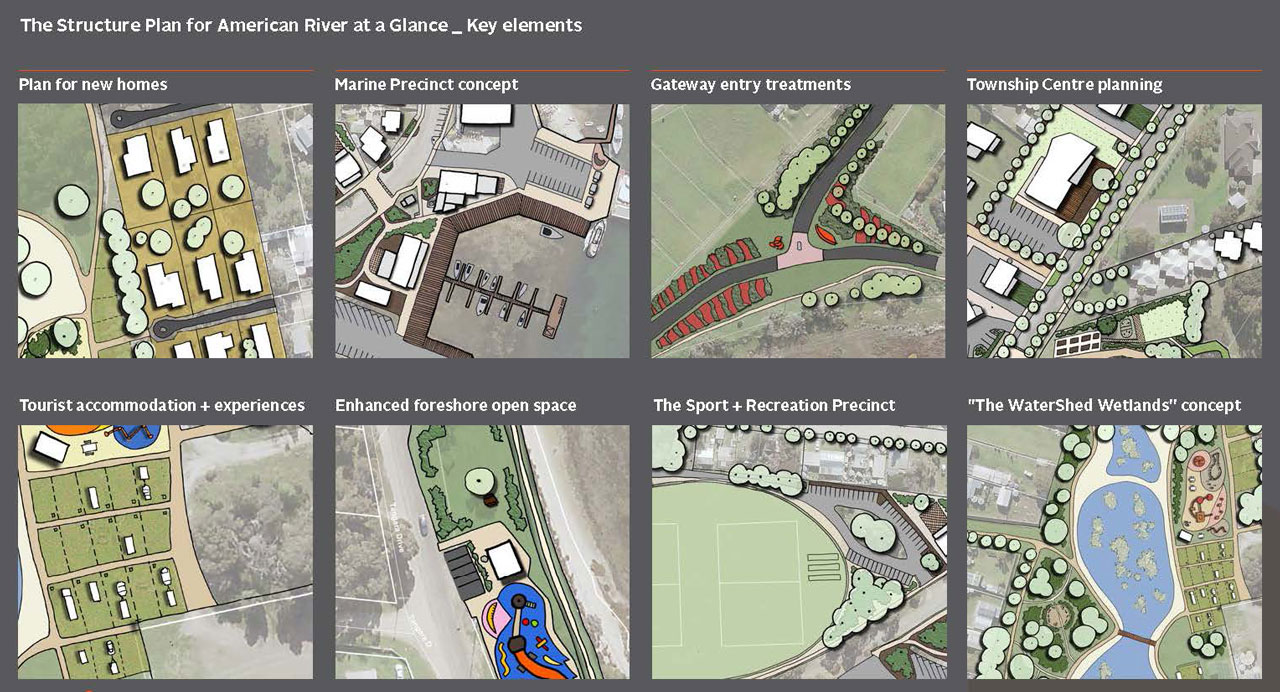
Importantly, many of the initiatives in the plan were already identified or even underway by established community groups in the town.
“Although the brief for our work spoke to infrastructure and growth, this is a place-focused and targeted plan considering smaller projects that are likely to happen and can be realistically achieved.
“It’s about doing good locally, and it’s about using local partnerships to get things going. It’s about a more regenerative approach.”
Master planned communities
South Australia has always done master planned communities well and in fact, South Australian projects such as West Lakes, Golden Grove, Mawson Lakes and Lightsview have often set the national standard for well planned, successful and profitable master planned developments.
“It looks like we now have next generation of master planned communities in front of us with one such example the former salt fields at Dry Creek — part of an extensive salt mining operation along the coast to feed a now redundant industrial process.”
So, can this former salt mine be successfully regenerated into a thriving place to live or work?
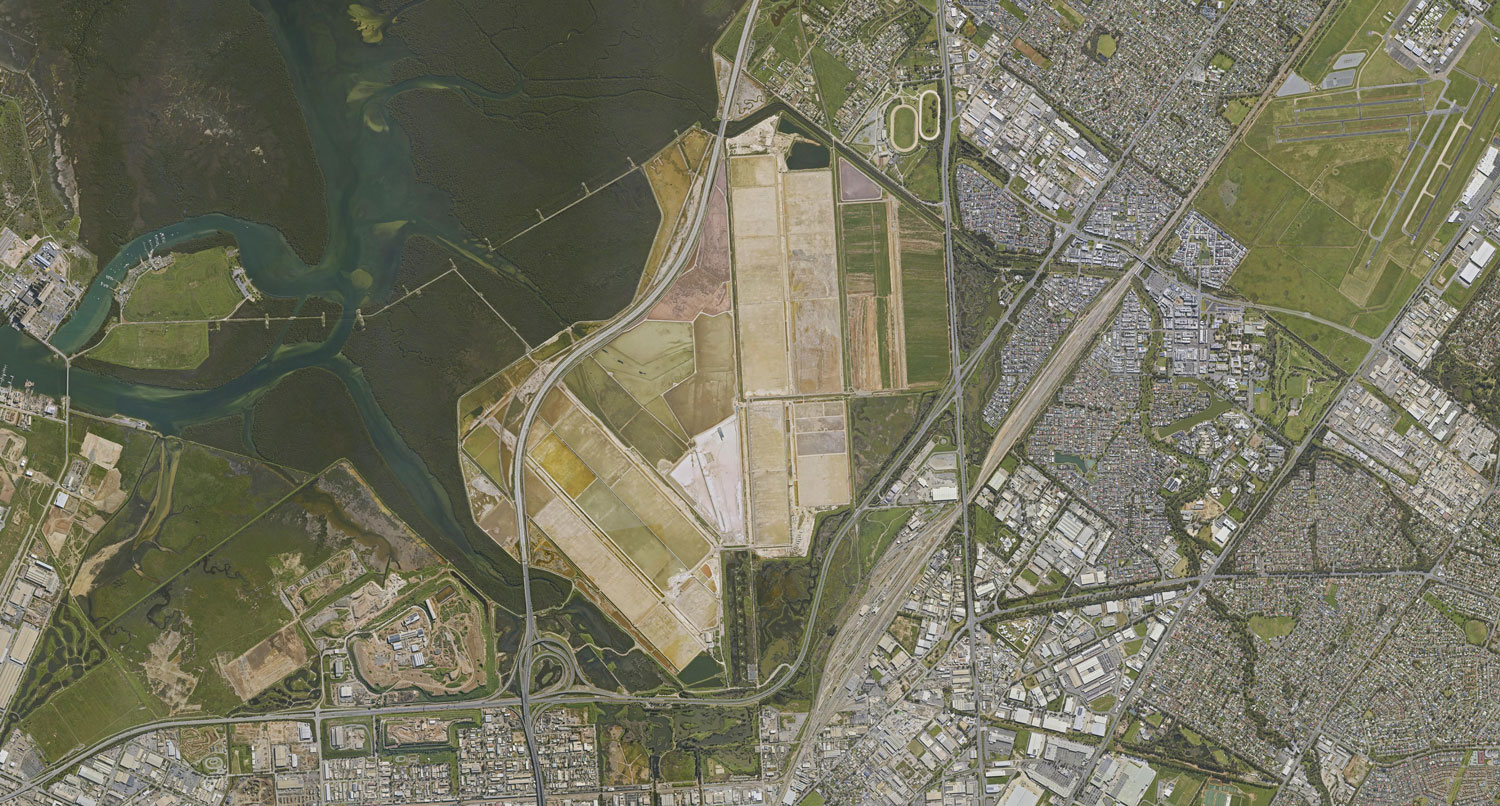
“We know the Dutch can build new cities like Almere with waterways and neighbourhoods and green and blue spaces and town centres.
“Maybe we can match their ambition and use our master planned community knowledge to create the next generation of places for urban developments and communities?”
To do this, Michael says that we need to bring together our creativity and technical skills, backed by the right level of funding, to regenerate a degraded place into a liveable space.
“In doing so we then won’t have to allocate so much of the land needed for growing food and natural resources, to new housing and development.”
Regenerating small business
Further to our focus through our professional work, regenerating small business is also on our radar.
“Jensen PLUS is a small team of ten people with diverse skills and knowledge. We regularly review where we are and where we want to be.”
Recent business planning activities have focused on the concept of regeneration.
“After all, regenerating towns, cities and communities is what we want to be doing in our work, it’s what motivates us to come to work and get the best outcomes for our projects.
The Jensen PLUS team clearly identified that we want to work with clients and on projects that aspire to regenerate towns, cities and communities.
“We are also very focused on collaboration as the best way to achieve excellent planning and design outcomes, and we also care deeply about the places and people we work with, including our own team.”
As we progress our strategic business visioning, these regenerative ideas will be tightly incorporated into our new business plan.
Regenerating self
“From a personal point of view, after working for the last 20 years in Australia, I have found important to reengage with the city myself,” says Michael.
“Sometimes everything can become very ‘same, same’ so it is important to stop, reflect and be inspired by what’s around us. And also to really see, listen to and understand the changing community and city around us.”
Over the last year, Michael says that he has spent more time urban sketching — a global movement of sketchers who draw streets, buildings and people around us.
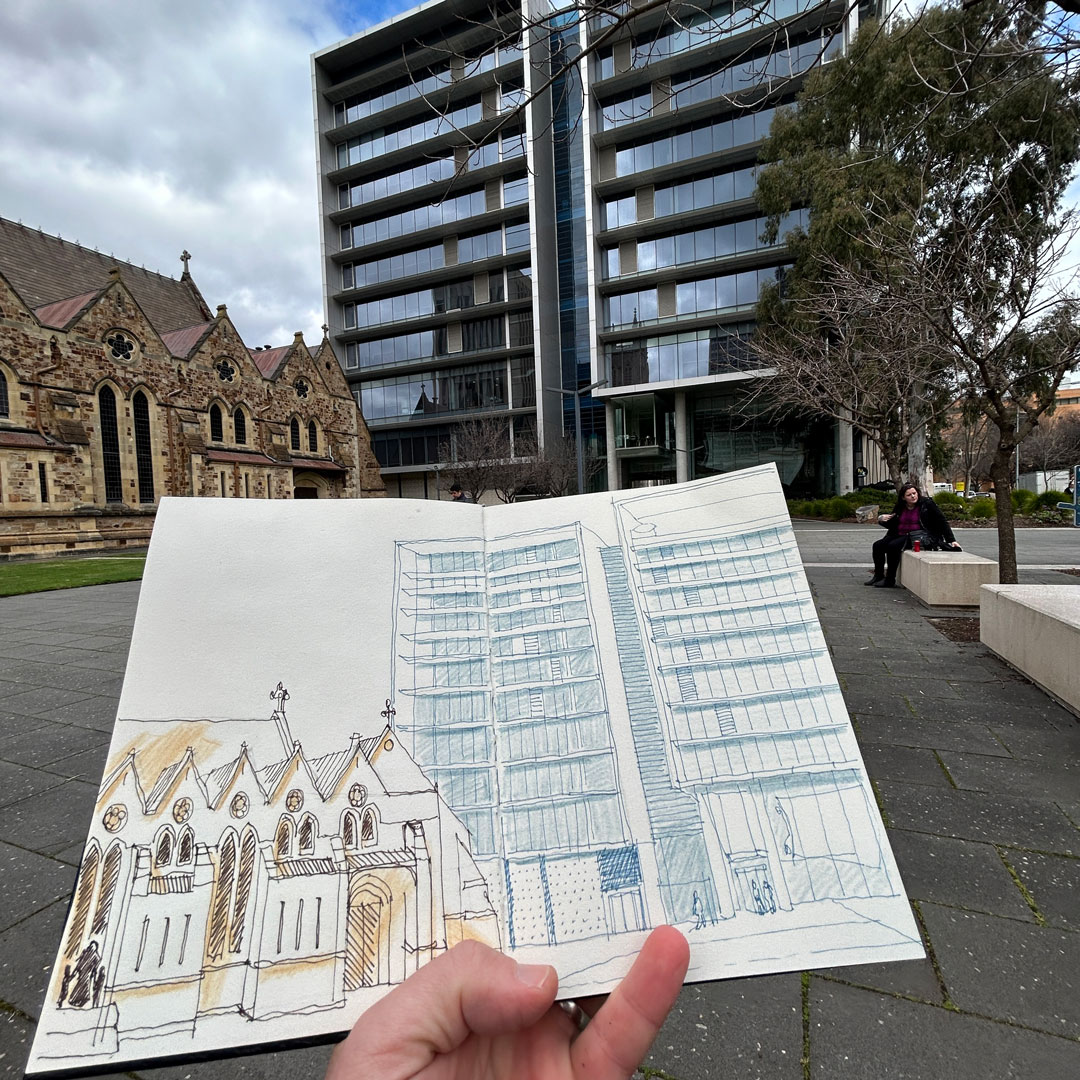
“The trick is you have to do it on site while you are there. You can’t do it at home based on photos. But sketching in situ really helps you to actively see what’s around you and not just take in superficial information.
“And of course, people like to come up and talk to you while you’re sketching — it generates lots of interesting observations and conversations.”
“I find urban sketching a great way to relax. It helps me to detach slightly from the pressures of work while still thinking about the issues I am most passionate about.”
Follow Michael’s urban sketching journey on Instagram.
Keeping the conversation going
Together, our team believe we have a responsibility to our clients, communities and the environment to create places and spaces are regenerative.
As such, we are working to make regenerative design principles inform all our work and how we approach it, and we hope to see others within our industry doing similar.
“I’m interested in how other planners and designers view ‘sustainability’ in 2023,” says Michael. “Let’s talk!”
